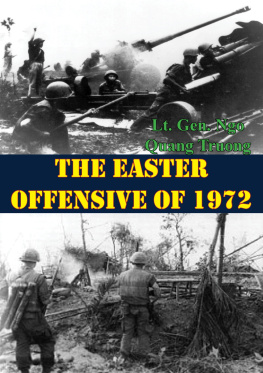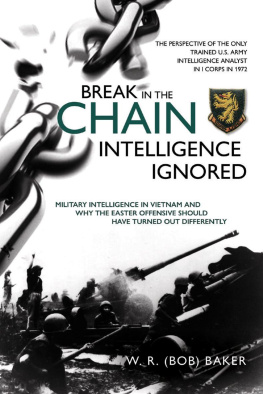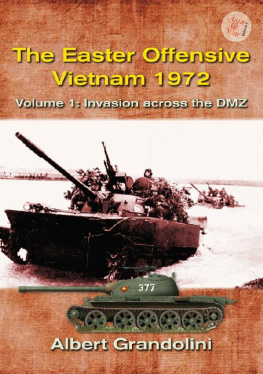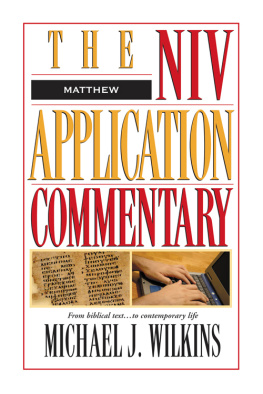
This edition is published by PICKLE PARTNERS PUBLISHINGwww.picklepartnerspublishing.com
To join our mailing list for new titles or for issues with our books picklepublishing@gmail.com
Or on Facebook
Text originally published in 2006 under the same title.
Pickle Partners Publishing 2014, all rights reserved. No part of this publication may be reproduced, stored in a retrieval system or transmitted by any means, electrical, mechanical or otherwise without the written permission of the copyright holder.
Publishers Note
Although in most cases we have retained the Authors original spelling and grammar to authentically reproduce the work of the Author and the original intent of such material, some additional notes and clarifications have been added for the modern readers benefit.
We have also made every effort to include all maps and illustrations of the original edition the limitations of formatting do not allow of including larger maps, we will upload as many of these maps as possible.
AIRPOWER AND THE 1972 EASTER OFFENSIVE
BY
LT COL MATTHEW C. BRAND.
TABLE OF CONTENTS
Contents
TABLE OF CONTENTS
REQUEST FROM THE PUBLISHER
ABSTRACT
AIRPOWER AND THE 1972 EASTER OFFENSIVE, by Lt Col Matthew C. Brand.
In the spring of 1972, North Vietnam launched a massive, three-pronged attack into South Vietnam that was eventually repulsed by South Vietnamese forces, United States (US) advisors and massive amounts of American airpower. The problem is determining what factors were key to South Vietnams successful defense. To that point, this thesis will address the overall effectiveness of US airpower in defeating North Vietnams attack. This paper first examines the strategic and operational environment surrounding the 1972 offensive, including the role and influence that the leaders of the US, Saigon, Hanoi, China, and the Soviet Union had on the conflict. It then shifts to the three primary tactical battles, describing each in detail, from the initial communist successes to their ultimate defeat. Finally, the analysis focuses specifically on airpowers role, from the massive strategic deployment that doubled the available assets in theater in just over a month, to its operational success striking targets in North Vietnam, to its tactical successes on the various battlefields of South Vietnam. Ultimately, this analysis determines that US airpower, with US advisors playing a critical enabling role, was the decisive element in the defeat of North Vietnams Easter Offensive.
ACKNOWLEDGMENTS
Completing this thesis required the cooperation and assistance of a variety of professional colleagues and also would not have been possible without sacrifices by members of my family. First, let me thank my faculty committee members, each of whom brought a unique perspective to my research. My committee chair, Dr James Willbanks, was able to give me key research advice based on his own Ph.D. experience. More importantly, as a former US Army captain advisor who was wounded during the valiant defense of An Loc during the Easter Offensive who has written two books on the topic, Dr Willbanks gave absolutely crucial input that could only have come from someone so intimately familiar with the topic. Colonel David El Cid Neuenswander, a combat veteran fighter pilot, was a former commander of the United States Air Forces Air Ground Operations School and is the current Director of the United States Armys Command and General Staff College (CGSC) Air Force Element. His experience and professional military education mark his airpower expertise, and his advice was invaluable to the completion of this thesis. Lt Col William Jay Martin, the final member of my committee, was a great help to making my paper more readable with his remarkable ability to read and edit text. His recommendations were almost always right on target and much appreciated.
Lastly, I also greatly appreciate the sacrifice my family has made allowing me to take away valuable family time and apply it towards the completion of this degree, particularly during a year where I spent a large amount of time away from home performing job-related temporary duty. Thank you very much Julie, Madison, and Seth.
ACRONYMS
AAAAnti-aircraft Artillery
ALOAir Liaison Officer
ARVNArmy of the Republic of Vietnam
CASClose Air Support
DASCDirect Air Support Center
DMZDemilitarized Zone
FACForward Air Controller
FAC-AForward Air Controller-Airborne
FSBFire Support Base
JGSJoint General Staff
LGBLaser-guided Bomb
MACVMilitary Assistance Command Vietnam
MRMilitary Region
NSCNational Security Council
NVANorth Vietnamese Army
RVNAFRepublic of Vietnam Armed Forces
SAMSurface-to-Air Missile
TACCTactical Air Control Center
TACPTactical Air Control Party
TACSTactical Air Control System
TFTask Force
TTPTactics, Techniques and Procedures
USUnited States
USAFUnited States Air Force
VCViet Cong
VNAFVietnamese Air Force
VNMCVietnamese Marine Corps
ILLUSTRATIONS
Figure 1. North Vietnams 1972 Easter Offensive
Figure 2. Republic of Vietnam Military Regions and Major South Vietnamese Units just Prior to the Easter Offensive
Figure 3. Key Locations and Fire Support Bases in MR I
Figure 4. The Timeline of the NVA Assault on Quang Tri
Figure 5. NVA Attack Plan in Binh Long Province
CHAPTER 1 INTRODUCTION
On this question of the B-52s and the tac air, its very clear to me thatas far as my view on this is concernedthat this government would now have fallen, and this country would now be gone, and we wouldnt be meeting here today, if it hadnt been for the B-52s and the tac air. {1} General Creighton W. Abrams
On 30 March 1972, North Vietnam launched a massive offensive into South Vietnam along several fronts. After prepping the battlefield with heavy artillery barrages, 40,000 North Vietnamese troops poured into South Vietnam unexpectedly through the demilitarized zone (DMZ) that separated the two nations. {2} An additional 20,000 North Vietnamese Army (NVA) troops, many of whom had infiltrated South Vietnam ahead of time, lodged in the rugged, forested highland area north and west of Pleiku. {3} Their third and final major thrust was just north and northwest of Saigon, ultimately sending three divisions totaling 35,000 into Binh Long Province on 5 April. {4}
Both sides recognized the great significance of the moment. South Vietnam President Nguyen Van Thieu described the invasion as the final battle to decide the survival of the [South Vietnamese] people, and North Vietnam had grand visions of potentially hastening the early defeat of South Vietnam. {5} The outcome of this great campaign is now known. South Vietnam, the United States (US) and their allies stopped the offensive, took the initiative, and drove the Communists back in most areas. This thesis will determine to what extent US airpower played the key role in this unfolding drama. Were US air forces the most decisive factor to the defeat of North Vietnams Easter Offensive, or were they just one of many equally effective elements to the defense of South Vietnam?










